The 100,000 reasons for electric motors... you must be a master if you know them all!
▼Permanent magnet motors
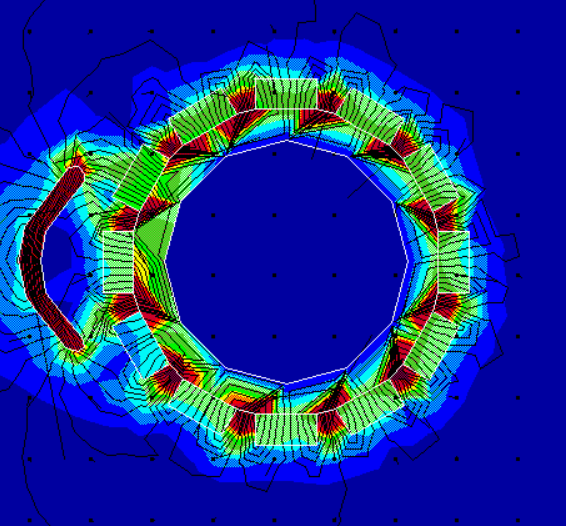
▼ DC motors
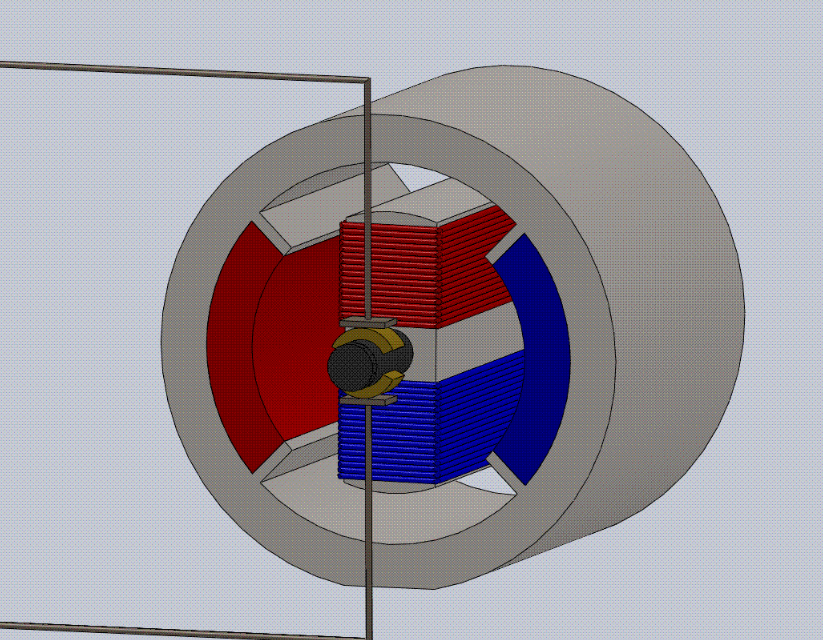
▼Quantum Magneto
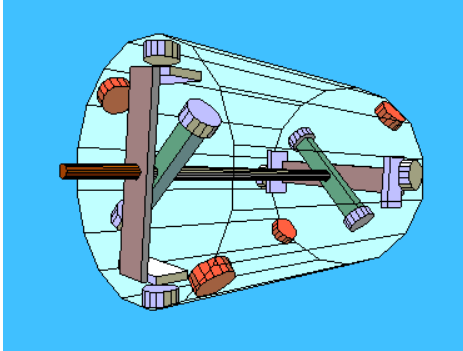
▼Single-phase induction motors
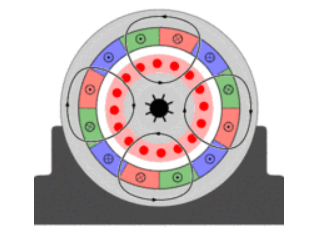
▼ How stepper motors work
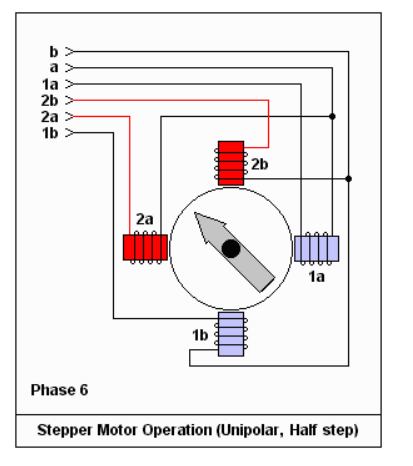
▼ Balancing motors
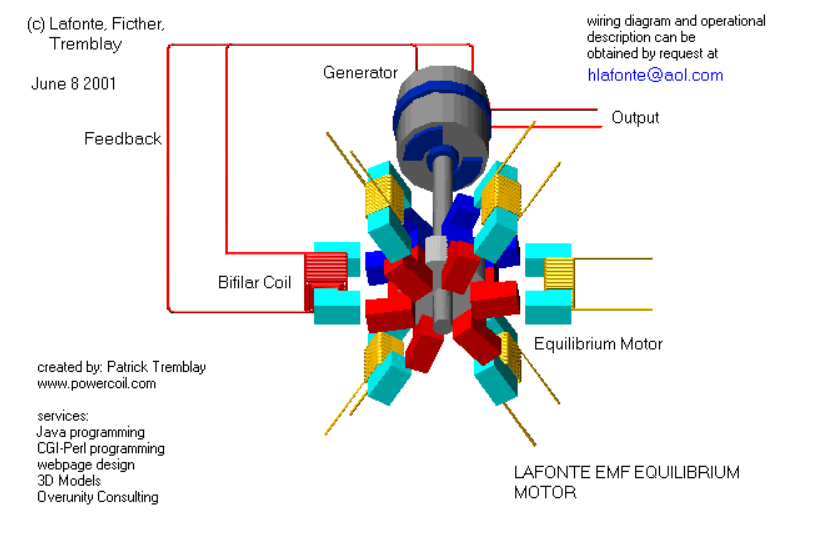
▼The Principle of Current Generation
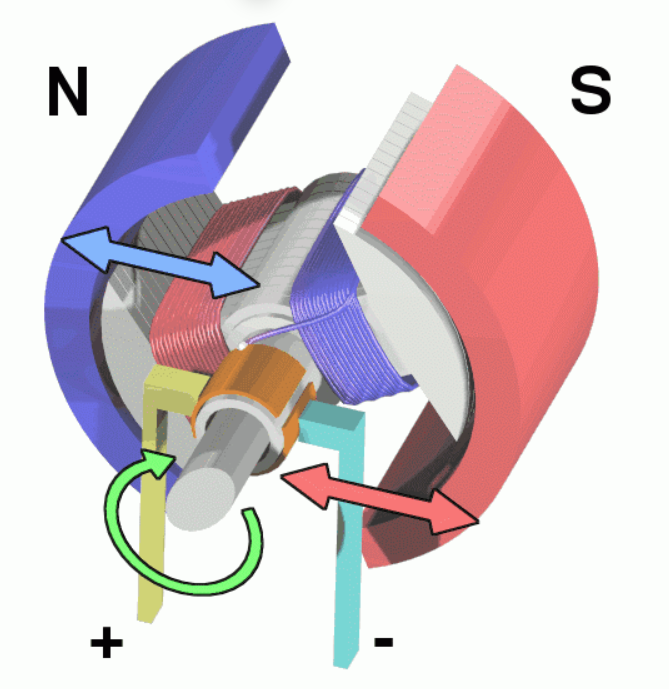
▼Three Phase Stator
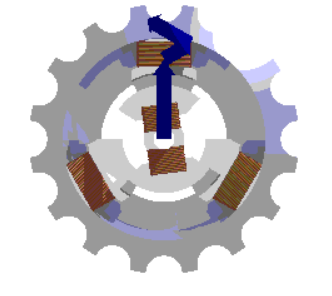
▼ Small Electric Motors
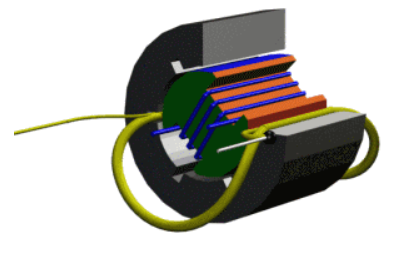
▼Motor cut view
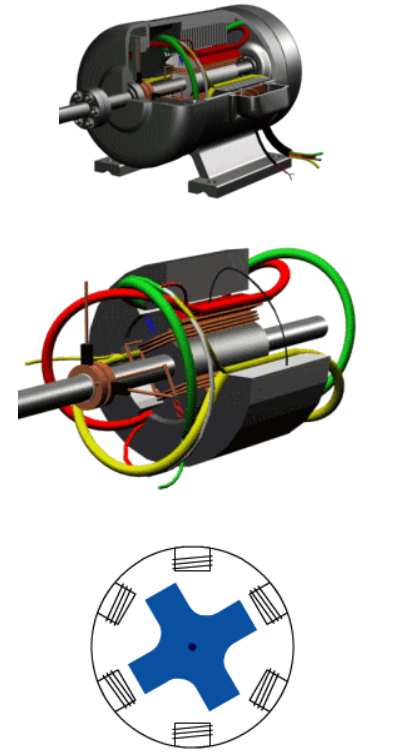
▼Motors
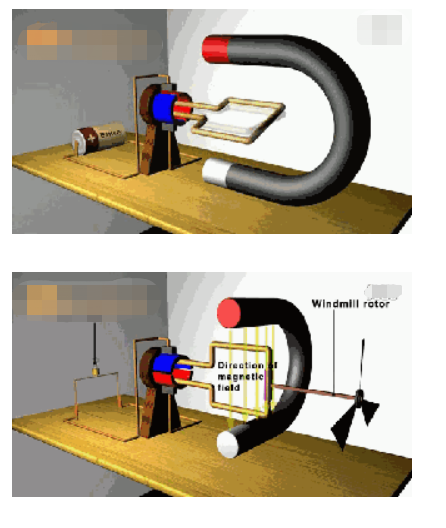
Questions and answers about the basics of electric motors
★What is electric motors?
A: An electric motor is a component that converts battery electrical energy into mechanical energy to drive the wheels of an electric vehicle to rotate.
★What do you mean by winding?
A: The armature winding is the core part of DC motors and is a coil wound with copper enameled wire.
When the armature winding is rotated in the magnetic field of the electric motor, it all generates an electric potential.
★What is meant by a magnetic field for motor technology?
A: The force field occurring around a permanent magnet or current and the space or range of magnetic forces that can be reached by any magnetic force.
★What is meant by magnetic field strength?
A: The strength of the magnetic field of an infinitely long wire carrying a current of 1 ampere at a distance of 1/2 m from the wire is defined as 1A/m (ampere/m, International System of Units SI);
in the CGS system of units (cm - g - sec), the strength of the magnetic field of an infinitely long wire carrying a current of 1 ampere at a distance of 0.2 cm from the wire is defined as 10e (Austrian), 10e = 1/4.103/m, in honour of Austrian contributions to electromagnetism, and the strength of the magnetic field is usually expressed as H.
★ What is meant by Ampere's rule?
A: Hold a wire in your right hand, so that the direction of your straightened thumb is the same as the direction of the direct current, then the direction pointed by your bent four fingers is the direction of magnetic induction around the wire.
★What does magnetic flux mean?
A: Magnetic flux is also known as magnetic flux: located in a uniform magnetic field there is a plane perpendicular to the direction of the magnetic field, the magnetic induction strength of the magnetic field is B and the area of the plane is S.
We define the product of the magnetic induction strength B and the area S as the magnetic flux across this plane.
★What is a stator of electric motor?
A: The part of a brushed or brushless electrical motors that does not turn when it is in operation.
The electric motor shaft of a hub-type brush or brushless gearless motor is called the stator, and such induction motor may be called an internal stator motor.
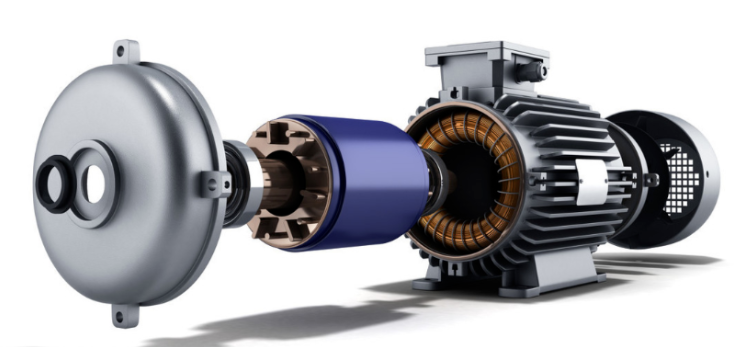
★What is a rotor of electric motor?
A: The part of a brush or brushless motor that turns when it works.
The housing of a hub-type brush or brushless gearless motor is called a rotor, and such electric motor can be called an external rotor motor.
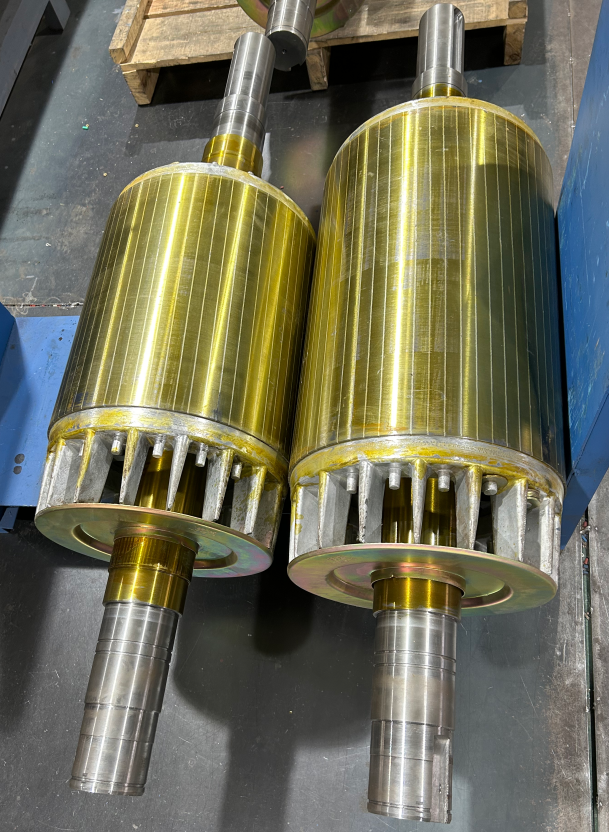
★What do you mean by carbon brushes?
A: Brush motor inside the top in the phase converter surface, the motor rotation, the electrical energy through the phase converter to the coil, because its main component is carbon, called carbon brushes, it is easy to wear.
They should be regularly maintained and replaced and cleaned of carbon build-up.
★What is a brush grip?
A: The mechanical guide groove that holds and keeps the carbon brushes in position inside a brushed motor.
★What is a phase changer?
A: Inside the brush motor, there is a mutually insulated metal surface, when the electric motor rotor rotates, the metal strip alternately touches the positive and negative poles of the brushes to achieve alternate positive and negative changes in the direction of the industrial motor coil current and complete the phase change of the brush motor coil.
★What is phase sequence?
A: The order of arrangement of brushless motor coils.
★What are magnets?
A: Magnetic material generally used to call high magnetic field strength, electric car motors are used neodymium boron rare earth magnets.
★What is electric potential?
A: It is generated by the rotor of the motor cutting the magnetic lines of force, and its direction is opposite to the applied power supply, so it is called counter-electromotive force.
★What is a brushed motor?
A: When the motor is working, the coil and commutator rotate, the magnets and carbon brushes do not rotate.
The alternating change of coil current direction is done by the commutator and brushes that rotate with the industrial motor.
In the electric vehicle industrial brush motors are divided into high speed brush motors and low speed brush motors.
There are many differences between brushed and brushless motors, from the word brush motors have carbon brushes and brushless motors do not have carbon brushes.
★What is a low-speed brush motor? What are the characteristics?
A: In the electric vehicle industry, a low-speed brushed motor is a hub-type low-speed, high-torque brushless DC motor.
Where the relative speed of the motor stator and rotor is the speed of the wheel.
The magnets on the stator are 5 to 7 pairs and the number of slots in the rotor armature is 39 to 57.
As the armature windings are fixed in the wheel casing, heat is easily dissipated by means of the rotating casing.
The rotating housing is also woven with 36 spokes, which facilitates heat transfer.
The GIS training micro-signal is worth your attention!
★What are the characteristics of a brushed and toothed motor?
A: Brush motors have brushes, and the main hidden problem is "brush wear".
So users should be aware that there are two types of brush motors, with and without teeth.
It is a high speed motor, the so-called "tooth" is through the gear reduction mechanism, the motor speed will be lowered (because the national standard stipulates that the speed of electric vehicles should not exceed 20 kilometres per hour, so the motor speed should be about 170 revolutions per minute).
As the motor is slowed down by gearing, it is characterised by a strong start-up power and a high climbing capacity.
However, the electric hub is closed and only lubricated before leaving the factory, so it is difficult for users to carry out daily maintenance. Moreover, the gears themselves have mechanical wear and tear, and in about a year, insufficient lubrication leads to increased gear wear and noise, and the current also increases during use, affecting the life of the motor and battery.
★What is a brushless motor?
As the controller provides DC power in different current directions to achieve alternate changes in the direction of the coil current inside the industrial motor.
Brushless motors have no brushes or commutators between the rotor and stator.
★How do the electric motors achieve phase change ?
A: When a brushless or brushed motor is rotating, the direction of energisation of the coils inside the motor needs to change alternately so that the motor can rotate continuously.
The phase change of a brush motor is done by the commutator and the brushes together, while a brushless motor is done by the controller.
★What is phase loss?
A: One phase in the three-phase circuit of a brushless motor or brushless controller does not work.
Phase loss is divided into main phase loss and Hall phase loss. It is manifested as the motor jittering and not working, or rotating weakly and noisily.
It is easy to burn out the controller when it is working in the phase loss condition.
★What are the common types of electric motors?
A: Common motors are: brushed geared hub motors, brushed gearless hub motors, brushless geared hub motors, brushless gearless hub motors, side hung motors, etc.
★How to distinguish from the type of electric motor is high and low speed control motors?
A: A Brushed geared hub motors and brushless geared hub motors are high speed motors.
B Brushed geared hub motors, brushless geared hub motors are low speed motors.
★How is the power of a motor defined?
A: The power of a motor is the ratio of the mechanical energy output by the motor to the electrical energy provided by the power supply.
★Why should I choose the electrical power of a motor? What is the significance of selecting the power of a motor?
A: The choice of motor power rating is a very important and complex issue.
When the load, if the rated power of the electric motor is too large, the electric motor is often in the light load operation.
The capacity of the motor itself does not fully play, into the "big horse-drawn car", while the motor operating efficiency is low, bad performance, will increase operating costs.
On the contrary, the rated power of the three phase motor is required to be small, that is, "small horse-drawn car", the motor current exceeds the rated current, the motor consumption increased, low efficiency is a small matter, the important thing is to affect the life of the motor.
Even if the overload is not much, the life of the motor will be reduced more; overload more, will destroy the insulation of the motor insulation material insulation performance or even burned.
Of course, the rated power of the motor power source is small, it may not be able to drag the load at all, which will make the motor long time in the
The motor will be in the starting state for a long time and will be overheated and damaged.
Therefore, the rated power of the motor should be selected strictly in accordance with the operating conditions of the electric vehicle.
★Why do DC brushless motors in general have three halls?
A: Briefly, in order for a brushless DC motor to rotate, there must always be a certain angle between the magnetic field of the stator coil and the magnetic field of the permanent magnet of the rotor.
The process of rotor rotation is also the process of changing the direction of the rotor's magnetic field. In order to make the angle between the two magnetic fields, the direction of the stator coil's magnetic field must change after a certain point.
So how do you know that the direction of the stator field is going to change?
That depends on the three halls.
It can be assumed that the three halls are tasked with telling the controller when to change the direction of the current.
★What is the approximate range of power consumption of a brushless motor Hall?
A: The approximate power consumption of a brushless motor Hall ranges from 6m A to 20m A.
★How high can a motor normally operate at? What is the maximum temperature that the motor can withstand?
A: If the temperature of the low voltage motor cover exceeds the ambient temperature by more than 25 degrees.
It means that the temperature rise of the motor is beyond the normal range, and generally the motor temperature rise should be below 20 degrees.
Generally motor coils are made of enamelled wire, and when the temperature of the enamelled wire is above 150 degrees, the enamel film will fall off due to the high temperature, causing a short circuit in the coil.
When the coil temperature is above 150°C the motor casing shows a temperature of around 100°C, so if the casing temperature is used as a basis the maximum temperature the energy efficiency motor can withstand is 100°C.
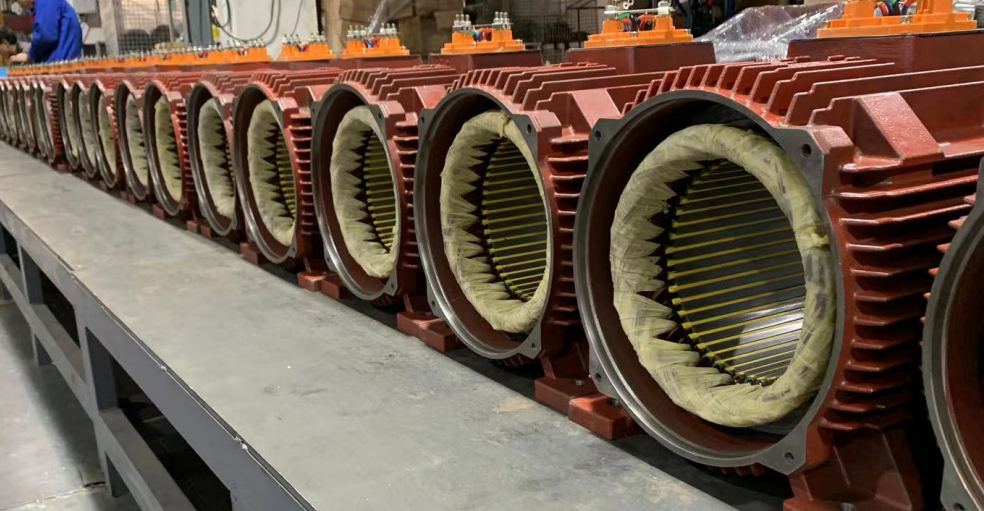
★The temperature of the electric motor should be below 20 degrees Celsius?
i.e. the temperature of the electric motors end cover over the ambient temperature should be less than 20 degrees Celsius, but what is the reason for the electric motor to heat up over 20 degrees Celsius?
A: The direct cause of electrical motor heating is caused by high current.
Generally it may be caused by short circuit or open circuit of the coil, demagnetisation of the magnet or low efficiency of the electric motor, etc.
The normal situation is that the electric motor runs at high current for a long time.
★What causes a motor to heat up? What is the process?
A: There are power losses within the motor when the electric motor is running under load, which will eventually turn into heat, which will cause the motor temperature to rise above the ambient temperature.
The value of the motor temperature above the ambient temperature is called heating up.
Once there is a rise in temperature, the electric motor must dissipate heat to the surrounding area; the higher the temperature, the faster the heat is dissipated.
When the heat emitted by the motor unit time is equal to the heat dissipated, the electric motor temperature no longer increases, but maintains a stable and constant temperature, that is, in a state of heat generation and heat dissipation balance.
★ What is the general click allowable temperature rise? Which part of the motor is most affected by the temperature rise of the electric motor? How is it defined?
A: When the electric motor is running under load, the greater the load, i.e. the greater the output power, the better (if mechanical strength is not considered).
But the higher the output electrical power and the higher the power loss, the higher the temperature.
We know that the weakest thing in the electric motors to withstand temperature is the insulation material, such as the enamelled wire.
Insulation material temperature resistance has a limit, within this limit, insulation material physical, chemical, mechanical, electrical and other aspects of performance are very stable, its working life is generally about 20 years.
Beyond this limit, the life of the insulation material will be sharply shortened, or even burned. This temperature limit is called the permissible temperature of the insulating material.
The permissible temperature of the insulating material is the permissible temperature of the electric motor; the life of the insulating material is generally the life of the electric motors.
The ambient temperature varies with time and place, but the design of the motor is based on the standard ambient temperature of 40 degrees Celsius.
Therefore, the allowable temperature of the insulation material or motor minus 40 degrees Celsius is the allowable temperature rise, the allowable temperature of different insulation materials is not the same, according to the allowable temperature, the common insulation materials for motors are A, E, B, F, H five. According to the ambient temperature of 40 degrees Celsius.
These five types of insulation materials and their permissible temperature and temperature rise are shown in the following table.
Grade insulation materials allowable temperature allowable temperature rise
A impregnated cotton, silk, cardboard, wood, electric machines etc., ordinary insulating paint 105 65
E Epoxy resin, mylar film, green shell paper, triac, highly insulating varnish 120 80
B Combinations of mica, asbestos, and glass fibres with organic lacquers with improved heat resistance as binders 130 90
F Mica, asbestos and glass fibre compositions bonded or impregnated with epoxy resins with excellent heat resistance 155 115
H Mica, asbestos or glass fibre compositions bonded or impregnated with silicone resin, silicone rubber 180 140
★ How do I measure the phase angle of brushless DC motors?
A: The phase angle of a brushless motor can be detected by switching on the controller and having the controller supply power to the Hall element.
The method is as follows: use the +20V DC voltage class of the multimeter, and connect the red pen to the +5V line, and the black pen to measure the high and low voltages of the three leads respectively, according to the phase change table of the 60 degree and 120 degree electric motors can be compared.
★Why can't any DC brushless controller and DC brushless motor be connected at random and turn up normally? Why is there a reverse phase sequence in DC brushless?
A: Generally speaking, The brushless DC motor in actual motion is a process of
The motor rotates - the rotor magnetic field direction changes - when the angle between the stator magnetic field direction and the rotor magnetic field direction reaches 60 degrees electrical angle - the Hall signal changes --Phase line current direction changes --Stator field crosses 60 degrees electrical angle forward --Stator field direction and rotor field direction are at an angle of 120 degrees electrical angle --The electric motor continues to rotate.
Thus we understand that there are six correct states of Hall.
When a specific Hall tells the controller, the controller has a specific phase output state.
So inverting the phase sequence is to accomplish the task of making the electrical angle of the stator always step in one direction at a 60 degree electrical angle.
★ What happens if a 60 degree brushless controller is used on a 120 degree brushless motor? And vice versa?
A: Both will result in phase loss and will not rotate normally;
However, the controller used by JENNER is an intelligent brushless controller that can automatically identify 60 degree motors or 120 degree electric motors, thus making it compatible with both types of electric motors and making maintenance and replacement more convenient.
★How can the DC brushless controller and DC brushless motor be inverted to the correct phase sequence?
A: The first step is to ensure that the power and earth wires of the Hall line are plugged in with the corresponding lines on the controller.
While the three motor Hall lines and the three motor lines have a total of 36 connections to the controller, the simplest and dumbest method is to test each state one by one.
When changing connections can be done without power, but must be careful, but also in a certain order.
Be careful not to twist too much each time, if the motor does not rotate smoothly, then this state is not right, turn the twist is too big to damage the controller.
If there is a reversal of the situation, in the case of knowing the phase sequence of the controller is to swap the controller Hall line a, c, click line A phase and B phase swap, can be inverted to positive rotation.
The final verification of the correct method of connection is normal when motor running at high current.
★How can I control a 60 degree motor with a 120 degree brushless controller?
A: Add a directional line between phase b of the Hall signal line of the brushless motor and the sampling signal line of the controller.
★What is the intuitive difference between a brushed high speed motor and a brushed low speed motor?
Answer.
A. High-speed motors have an overrunning clutch, which makes it easy to turn in one direction and exhausting to turn in the other; low-speed electric motors turn buckets in both directions as easily.
B. High speed motors are noisier when the car is turning, low speed electric motors are less noisy.
Experienced people can easily identify them by ear.
★What is the rated running state of a motor?
A. When the motor is running, if all physical quantities are the same as its rated value, it is called rated running condition.
Working under rated running condition, the electric motor can run reliably and has the best overall performance.
★How is the rated torque of the motor calculated?
A: The rated torque output on the click axis can be expressed as T2n, the size of which is the mechanical power rating of the output divided by the speed rating of the transfer, i.e. T2n=Pn where Pn is in W, Nn is in r/min, T2n is in N.M, if PNM is in KN, the factor 9.55 is changed to 9550.
Therefore, it can be concluded that if the rated electrical power of the electrical motors is equal, the lower the speed of the most frequently used motors, the greater the torque.
★What is the definition of the starting current of ac induction motors?
A: Generally, the starting current of electrical motors must not exceed 2-5 times its rated current, which is an important reason why current limiting protection is applied to the controller.
★Why are the speeds of electrical motors on the market getting higher and higher? What are the implications?
A: On the supplier's side, speed can be increased to reduce costs, the same low-speed motor, high speed coil turns will be less, but also save silicon steel, the number of magnets is also less, the buyer thinks that high speed is good.
Rated speed work, its power remains the same, but in the low speed zone when the efficiency is obviously low, that is, starting powerless.
Low efficiency requires high current to start and high direct current when riding, which requires high current limiting for the controller and is not good for the battery.
★How to repair the abnormal heat condition of the motor?
A: The repair treatment is usually to replace the electric motor, or to carry out maintenance.
★The no-load current of the electric motor is greater than the reference table limit data indicates that the motor is faulty, what are the causes? How to repair?
A: Click on the internal mechanical friction; coil local short circuit; magnet demagnetization; DC motor phase changer carbon accumulation.
The repair treatment is generally to replace the motor, or replace the carbon brush and clean up the carbon accumulation.
★What is the maximum limit no-load current of various motors without fault?
Electric Motor type rated voltage 24V rated voltage 36V
Side-hung motor 2.2A 1.8A
High-speed brushed motor 1.7A 1.0A
Low-speed brushed motor 1.0A 0.6A
High-speed brushless motor 1.7A 1.0A
Low-speed brushless motor 1.0A 0.6A
★How to measure the electric motor idling current?
A: Place the multimeter in the 20A position and connect the red and black meter pens in series to the power input of the controller.
Turn on the power and record the maximum alternating current A1 of the multimeter at this point without the motor turning.
Rotate the handle so that the motor rotates at high speed at no load for more than 10s, wait for the motor speed to stabilise, then start to observe and record the maximum value of A2 on the multimeter at this point. Motor no-load current = A2-A1.
Comparison of commonly used motors for electric vehicles.
Electric Motor Form Drive Form Motor Efficiency Climbing Performance Maintenance Cycle Volume Maintenance Content Noise Cost
Brushless toothless brushless low speed external rotor motor, direct drive〉 80% General no large no small low.
Brushless toothed high speed brushless motor, planetary gear reduction〉 83% good about 3 years small lubricated gear medium high.
brushed and toothed high-speed brushed motors, 2-stage gear reduction < 78% good about 1 year large replacement of carbon brushes, lubricated gears large high
Brushless low-speed brush outer rotor motor, direct drive 〈76% poor 2 years or so small replacement of carbon brushes, clean carbon small low.
★ How to identify the electric motor is good or bad? Key to see which parameters?
A: Mainly the size of the no-load current and riding current, compared with the normal value, and the motor energy efficiency and torque, as well as the electric motor noise, vibration and heat, the best way is to use a dynamometer to test the energy efficient curve.
★ What is the difference between 180W and 250W motors? What are the requirements for the controller?
A: The 250W has a high riding current and requires a higher power margin and reliability from the controller.
★Why does the riding current of an electric vehicle vary under standard conditions depending on the motor rating?
A: It is well known that under standard conditions, with a rated load of 160W, the riding current on a 250W DC motor is around 4 - 5A, while on a 350W DC motor the riding current is slightly higher.
As an example: if the battery voltage is 48V and both motors are 250W and 350W with a rated efficiency point of 80%, the rated operating current for a 250W motor is around 6.5A and for a 350W motor around 9A.
The general efficiency point of a motor is that the further the operating current deviates from the rated operating current, the smaller the value, and at a load of 4 - 5A, the efficiency of a 250W motor is 70% and that of a 350W motor is 60%, then at a load of 5A
The output power of 250W is 48V*5A*70%=168W
The output power of 350W is 48V*5A*60%=144W
The 350W motor has to increase its power supply in order to meet the output power requirement of 168W (which is almost the rated load), thus increasing the efficiency point.
Why is the range of a 350W motor shorter than that of a 250W motor in the same environment?
A: The range of a 350W motor is shorter than a 250W electric motor in the same environment because of the high riding electricity current.
★How should electric bicycle manufacturers choose a motor for electric cars ? According to what to choose the electric motor?
A: The most critical factor for electric bikes is the choice of motor power rating.
Motor power rating selection is generally divided into three steps.
The first step is to calculate the load power P
Step two, according to the load power electronics, pre-select the motor power rating and other.
In the third step, the pre-selected motor is calibrated.
Generally, the heating temperature rise is checked first, then the overload capacity and, if necessary, the starting capacity.
All passed, the pre-selected motor will be selected; can not pass from the second step to carry out again, until passed.
It is important that the rated power of the motor is as small as possible in order to meet the requirements of the load.
After the second step is done, the temperature is corrected according to the ambient temperature, the power rating is based on the national standard ambient temperature of 40 degrees Celsius.
If the ambient temperature is low or high all year round, the rated power of the motor should be corrected to make full use of the motor's capacity in the future.
For example, if the ambient temperature is low all year round, the actual rated power of the electric motor should be higher than the standard Pn, and conversely, if the ambient temperature is high all year round, the rated power should be reduced for use.
In general, in the case of ambient temperature determination, the choice of electric vehicle motor should be based on the riding state of the electric vehicle.
The more the riding state of the electric vehicle can make the motor close to the rated working state, the better, and the riding state of the electric vehicle is generally based on the road conditions.
If the road surface is smooth in Plains, then a low power motor is sufficient; if a higher power motor is to be used, it will cause a waste of energy and result in a short range.
If there are many mountainous roads in Highland mountains, a higher power variable frequency drives motor is appropriate.
★ A 60 degree DC brushless motor is more powerful than a 120 degree DC brushless motor, right? Why?
A: From the market, we found that when communicating with many customers, there is a common fallacy!
They think that a 60 degree motor is more powerful than a 120 degree motor.
We think that this is probably a kind of propaganda by the manufacturers of 60 degree brushless motors. The principle of the brushless motor and the fact that it is a 60 degree motor or a 120 degree motor!
The so-called degrees are just used to tell the brushless controller when to turn on the two phase wires that are on the mind. There is no such thing as who is more powerful than the other! The same applies to 240 degree and 300 degree motors, there is no such thing as who is more powerful than the other.
欢迎在评论区与我们分享更多关于电机的资讯!
任何关于电机的咨询,请联系专业电机 制造商 在 中国 如下:

东淳电机拥有广泛的电机产品,应用于交通、基础设施、建筑等各个行业。
获得及时回复。








